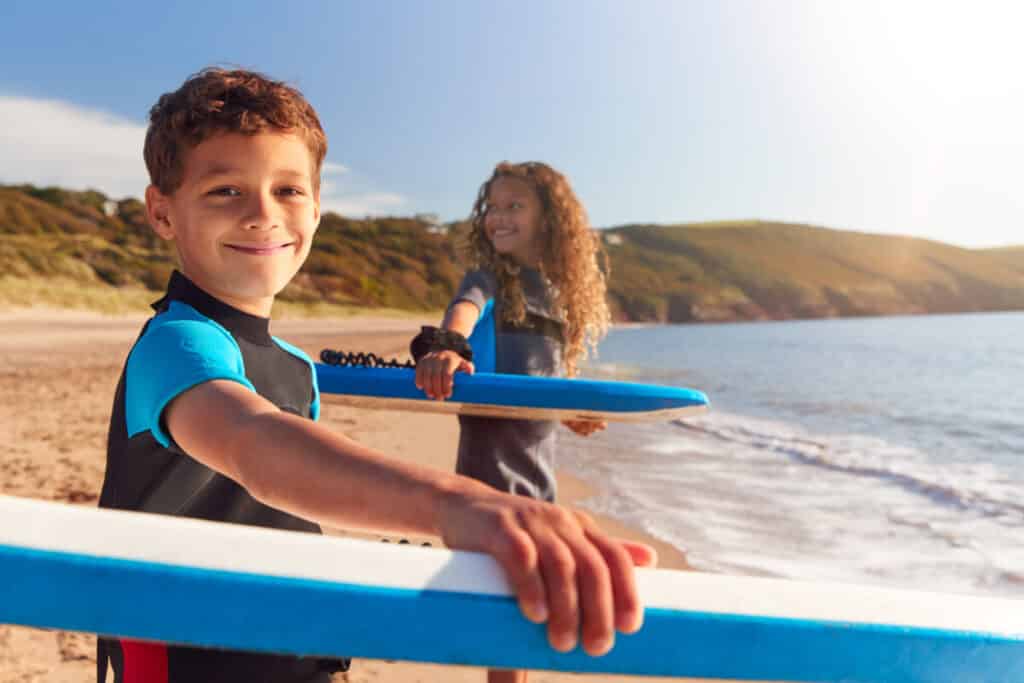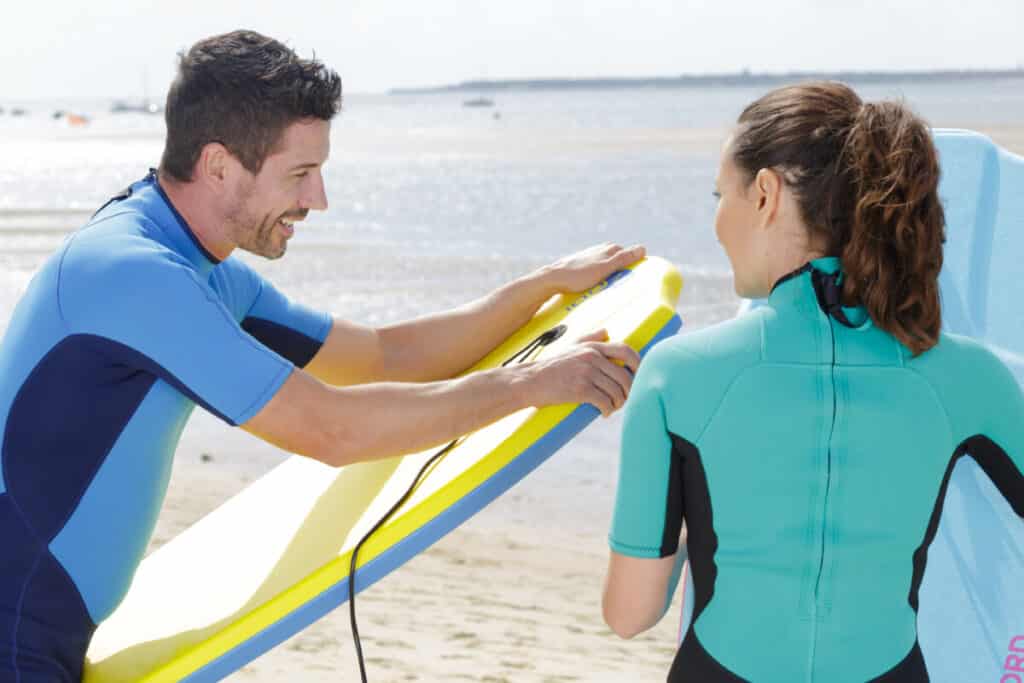
Learning how to bodyboard was one of the first things that helped me start enjoying the ocean. It’s a super fun way to spend time at the beach, but what are the other benefits? And is Bodyboarding a good exercise overall?
Bodyboarding is a good exercise because it is an intense cardio workout that is also easy on joints. Bodyboarding is a full-body workout because it takes leg and arm muscles to get the board in position in the water, and it uses ab muscles to balance on the board. It also increases coordination.
To show just how great of an exercise bodyboarding is, let’s take a look at what muscles you’ll use and build while doing it and the different ways you can go about it. The physical benefits are all over the place, but we’ll also go over the benefits it holds for your mental health.
Muscles You Use
Like swimming or Stand Up Paddling, bodyboarding is a full-body workout. You’ll use your legs to propel yourself forward, your arms for paddling and controlling the board, and your back and abs for various moves, as well as absorbing or recovering from hard landings. (Source)
To be more specific, the muscles you’ll use for kicking yourself forward are the quadriceps, tibialis anterior, hamstrings, gastrocnemius, and obliques. These muscles are in your thighs, shins, calves, and abs, respectively. You’ll also use pretty much all of your arm and shoulder muscles as you propel yourself through the water on your board. (Source)
Now that you know what muscles you’ll use for bodyboarding, you should know which muscles you need to stretch and condition in order to have the best experience during and after your time on the water.
Stretching
Before any exercise, stretching is always a good practice, and swimming exercises like bodyboarding don’t get a pass from that just because they’re recreational. If you go in when you’re out of shape and/or you haven’t stretched, you’re going to get a buildup of lactic acid in your overworked muscles and feel sore for the next day or two.
Start with your legs, as they will have the most work to do while you’re on the water (and sore legs are probably the worse to deal with out of any muscle group). You can stretch your calves and thighs with pretty simple lunges, and you can stretch your shin muscles by pointing your toes.
Arms and shoulders have a lot more ways to move than legs, sso it takes a little more effort to stretch them cleanly. I would just stretch my arm in every direction it’s meant to go until I’ve cycled through it all, but a more methodical way would be to follow this list of stretches or a YouTube video like this.
How long to stretch? A good rule of thumb is that each exercise should last between 15 – 30 seconds. This will ensure that you enter the water with supple muscles, but make sure that you have already warmed up the muscles a bit before stretching.
Cardio and Coordination
Bodyboarding also gets your heart pumping and your blood moving. Your lungs work hard to fill your blood with oxygen, too, and all that adds up to strengthening your cardiovascular system. It’s a similar cardio exercise to running, except that you don’t get any stress on your joints because the water is holding you up.
Additionally, it improves your coordination because you’re constantly concentrating on controlling the board. It takes small adjustments to stay on, and those kinds of precise movements are an exercise in precise coordination. (Source)
Competetive or Chill
Another great thing about bodyboarding is that you can do it the way you like. You might decide to go about it competitively, challenging yourself or a friend to learn and perform cool tricks. Usually, though, the bodyboarding scene is chill and judgment-free. There’s no pressure to do anything impressive, just enjoy the waves and have fun!
Whether you’re with a group of friends or surrounded by other beachgoers on bodyboards, the expectations are simply to have fun. You can go as big as you want, or you can take it slow and easy.
Others on the water might be impressed by any cool tricks you have up your sleeve, but no one’s there to judge you. They’re there to have fun and take it easy, too.

Mental Benefits
As with any exercise, bodyboarding is great for your mental health. The exercise releases hormones in your brain that relieve stress, making this exciting activity a relaxing one as well.
It also boosts your mood. In fact, exercise has been shown to be just as or more effective than antidepressants in that respect (I’m not saying to drop your meds and start bodyboarding, just that bodyboarding, among other exercises, can help on top of that). Whether or not depression or anxiety cause problems for you, bodyboarding can give you a better day.
Another benefit is sleep. You may not notice it while you’re in the water, but after a hard session of bodyboarding, you might be worn out. “I’ll sleep well tonight!” is something you might say or hear from a bodyboarding companion. And yes, that much exercise (full-body exercise, too) will help you get to sleep sooner and sleep better.
How is that a mental benefit? Well, the right quality and amount of sleep are important for your mental health. It helps you process what you’ve experienced and reset, consolidating memories and allowing your brain to heal itself. Good sleep helps you think and learn better, as well as improves your memory and emotional health.
Then there are the wipeouts to think about. Good knows I’ve been cocky before, thought I had mastered the waves, and then been chastised by the ocean and dragged under and filled with salt.
It’s a humbling experience, and it can teach you two things: one, to be better at recognizing when it’s about to happen and how to avoid it, and two, to get back up and try again. I think those are important things to learn, and bodyboarding makes it easy and fun to learn them the hard way.
Conclusion: Is Bodyboarding a good exercise?
So the simple answer to the question “Is Bodyboarding a good exercise” is: YES!
It is an efficient cardio workout that is also easy on joints. It also trains strength and stability in the arms, legs, and trunk.
Bodyboarding is consequently a real full-body workout because it takes leg, arm, and ab muscles to get up the board and out to the waves. But that’s not everything: it also trains your coordination and thanks to that all those highly important deep muscle structures.
And most importantly: it makes so much fun!!!






